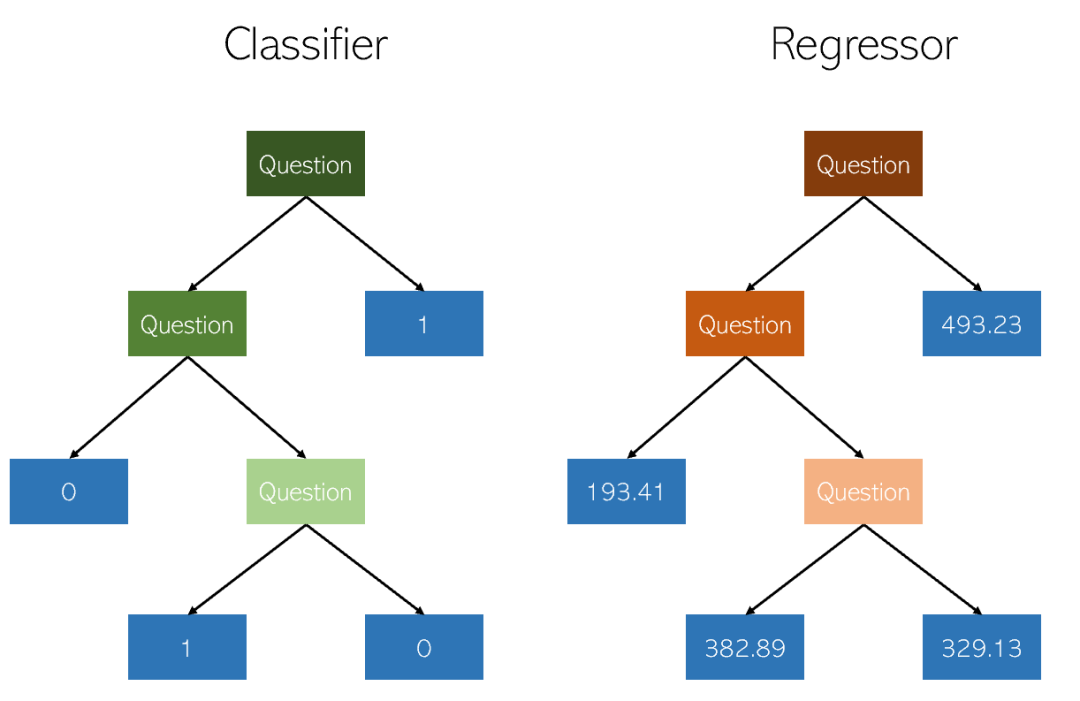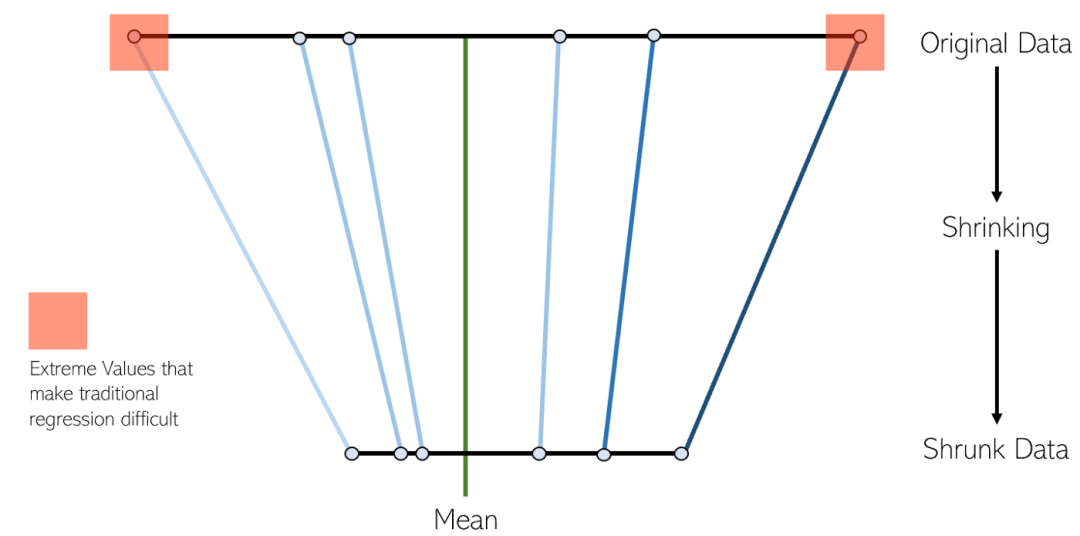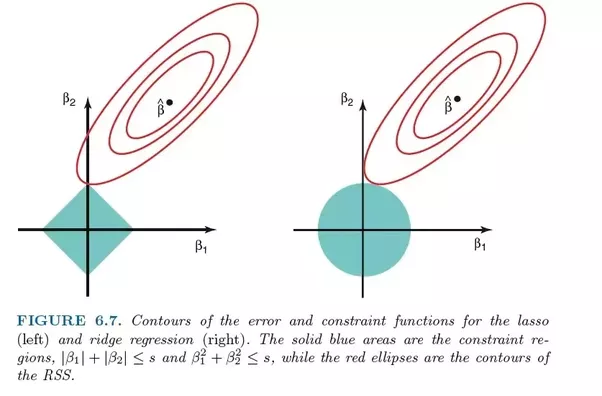 Technology peripherals
Technology peripherals
 AI
AI
 Commonly used regression algorithms and their characteristics in machine learning applications
Commonly used regression algorithms and their characteristics in machine learning applications
Commonly used regression algorithms and their characteristics in machine learning applications
Regression is one of the most powerful tools in statistics. Machine learning supervised learning algorithms are divided into two types: classification algorithms and regression algorithms. The regression algorithm is used for continuous distribution prediction and can predict continuous data rather than just discrete category labels.
Regression analysis is widely used in the field of machine learning, such as predicting product sales, traffic flow, housing prices, weather conditions, etc.The regression algorithm is a commonly used machine learning algorithm for establishing automatic The relationship between variable X and dependent variable Y. From a machine learning perspective, it is used to build an algorithm model (function) to achieve the mapping relationship between attribute X and label Y. During the learning process, the algorithm tries to find the best parameter relationship so that the degree of fit is the bestIn the regression algorithm, the final result of the algorithm (function) is a continuous data value. The input value (attribute value) is a d-dimensional attribute/numeric vectorSome commonly used regression algorithms include linear regression, polynomial regression, decision tree regression, Ridge regression, Lasso regression, ElasticNet regression, etc.This article will introduce some common regression algorithms and their respective characteristics
- Linear regression
- Polynomial regression
- Support vector machine regression
- Decision tree regression
- Random Forest Regression
- LASSO Regression
- Ridge Returns
- ElasticNet Returns
- XGBoost Returns
- Local weighted linear regression
Linear regression It's often the first algorithm people learn about machine learning and data science. Linear regression is a linear model that assumes a linear relationship between an input variable (X) and a single output variable (y). Generally speaking, there are two situations:
Univariate linear regression is a modeling method used to analyze the relationship between a single input variable (i.e., a single feature variable) and a single output variable The relationship
Multivariable linear regression (also called multiple linear regression): It models the relationship between multiple input variables (multiple feature variables) and a single output variable .
A few key points about linear regression:
- Quick and easy to model
- It is particularly useful when the relationship you want to model is not very complex and you don't have a lot of data.
- Very intuitive understanding and explanation.
- It is very sensitive to outliers.
Polynomial regression is one of the most popular choices when we want to create a model for nonlinear separable data. It is similar to linear regression but uses the relationship between variables X and y to find the best way to draw a curve that fits the data points.
Several key points about polynomial regression:
- can model nonlinear separable data; linear regression cannot make it happen. In general, it is more flexible and can model some fairly complex relationships.
- Full control over the modeling of feature variables (exponents to set).
- Requires careful design. Some data knowledge is required to select the best index.
- If the index is not chosen properly, it is easy to overfit.
Support vector machines are well known in classification problems. The use of SVM in regression is called Support Vector Regression (SVR). Scikit-learn has this method built into SVR().
A few key points about support vector regression:
- It is robust to outliers sex, and effective in high-dimensional spaces
- It has excellent generalization capabilities (the ability to correctly adapt to new, previously unseen data)
- If the number of features is much larger than the number of samples, it is easy to overfit
The decision tree is a type of classification used Non-parametric supervised learning methods for and regression. The goal is to create a model that predicts the value of a target variable by learning simple decision rules inferred from data features. A tree can be viewed as a piecewise constant approximation.

A few key points about decision trees:
- Easy to understand and explain. Trees can be visualized.
- Applies to both categorical and continuous values
- The cost of using DT (i.e. predictive data) is proportional to the number of data points used to train the tree Logarithmic
- The prediction of the decision tree is neither smooth nor continuous (as shown in the figure above, it is a piecewise constant approximation)
5. Random Forest Regression
Random Forest Regression is basically very similar to Decision Tree Regression. It is a meta-estimator that can fit multiple decision trees on various subsamples of the data set and average them to improve prediction accuracy and control overfitting
random Forest regressors may perform better or worse than decision trees in regression problems (although they are generally better in classification problems) due to subtle overfitting and underfitting inherent in the tree construction algorithm. Trade-offs
A few points about random forest regression:
- Reducing overfitting in decision trees and improve accuracy.
- It also works for categorical and continuous values.
- Requires a lot of computing power and resources because it fits many decision trees to combine their outputs.
6. LASSO regression
LASSO regression is a variant of shrinkage linear regression. Shrinking is the process of shrinking data values to a center point as an average. This type of regression is ideal for models with severe multicollinearity (high correlation between features)

A few points about Lasso regression:
- #It is most commonly used to eliminate automatic variables and select features.
- It is well suited for models that show severe multicollinearity (features are highly correlated with each other).
- LASSO regression utilizes L1 regularization
- LASSO regression is considered better than Ridge because it only selects some features and combines other features coefficient is reduced to zero.
7. Ridge regression
Ridge regression is very similar to LASSO regression because both techniques use shrinkage methods. Both Ridge and LASSO regression are well suited for models with severe multicollinearity problems (i.e. high correlation between features). The main difference between them is that Ridge uses L2 regularization, which means that none of the coefficients will go to zero (but close to zero) like in LASSO regression

A few points about ridge regression:
- It is very suitable for showing severe multicollinearity (features are highly correlated with each other) Model.
- Ridge regression uses L2 regularization. Features that contribute less will have coefficients close to zero.
- Ridge regression is considered worse than LASSO due to the nature of L2 regularization.
8. ElasticNet Regression
ElasticNet is another linear regression model trained using L1 and L2 regularization. It is a hybrid of Lasso and Ridge regression techniques, so it is also well suited for models that show severe multicollinearity (features are highly correlated with each other).
When weighing between Lasso and Ridge, a practical advantage is that Elastic-Net can inherit some of Ridge’s stability under rotation
9. XGBoost Regression
XGBoost is an efficient and effective implementation of the gradient boosting algorithm. Gradient boosting is a type of ensemble machine learning algorithm that can be used for classification or regression problems
XGBoost is an open source library originally developed by Chen Tianqi in his 2016 paper "XGBoost: A Scalable Tree" Developed in "Boosting System". The algorithm is designed to be computationally efficient and efficient
A few points about XGBoost:
- ##XGBoost does not perform well on sparse and unstructured data.
- The algorithm is designed to be computationally efficient and efficient, but the training time is still quite long for large data sets.
- It is sensitive to outliers.
In Local Weights Linear Regression (Local Weights Linear Regression), we are also performing linear regression. However, unlike ordinary linear regression, locally weighted linear regression is a local linear regression method. By introducing weights (kernel functions), when making predictions, only some samples that are close to the test points are used to calculate the regression coefficients. Ordinary linear regression is global linear regression, which uses all samples to calculate the regression coefficient
Advantages, Disadvantages & Applicable Scenarios
##The advantage is to prevent under-fitting through kernel function weighting, but the disadvantage is also obvious that K needs to be debugged. When multiple linear regression is overfitting, you can try Gaussian kernel local weighting to prevent overfitting.11. Bayesian Ridge Regression
The linear regression model solved using the Bayesian inference method is called Bayesian linear regressionBayesian linear regression is a method that treats the parameters of a linear model as random variables and calculates the posterior through the prior. Bayesian linear regression can be solved by numerical methods, and under certain conditions, posterior or related statistics in analytical form can also be obtained
Bayesian linear regression has a Bayesian statistical model The basic properties of it can solve the probability density function of weight coefficients, conduct online learning and model hypothesis testing based on Bayes factor (Bayes factor)
Advantages and Disadvantages&Applicable Scenarios
#The advantage of Bayesian regression is that it has the ability to adapt to data, reuse data and prevent overfitting. In the estimation process, regularization terms can be introduced. For example, by introducing the L2 regularization term in Bayesian linear regression, Bayesian ridge regression can be realized.
The disadvantage is the learning process overhead Too big. When the number of features is less than 10, you can try Bayesian regression.
The above is the detailed content of Commonly used regression algorithms and their characteristics in machine learning applications. For more information, please follow other related articles on the PHP Chinese website!

Hot AI Tools

Undresser.AI Undress
AI-powered app for creating realistic nude photos

AI Clothes Remover
Online AI tool for removing clothes from photos.

Undress AI Tool
Undress images for free

Clothoff.io
AI clothes remover

Video Face Swap
Swap faces in any video effortlessly with our completely free AI face swap tool!

Hot Article

Hot Tools

Notepad++7.3.1
Easy-to-use and free code editor

SublimeText3 Chinese version
Chinese version, very easy to use

Zend Studio 13.0.1
Powerful PHP integrated development environment

Dreamweaver CS6
Visual web development tools

SublimeText3 Mac version
God-level code editing software (SublimeText3)

Hot Topics
 15 recommended open source free image annotation tools
Mar 28, 2024 pm 01:21 PM
15 recommended open source free image annotation tools
Mar 28, 2024 pm 01:21 PM
Image annotation is the process of associating labels or descriptive information with images to give deeper meaning and explanation to the image content. This process is critical to machine learning, which helps train vision models to more accurately identify individual elements in images. By adding annotations to images, the computer can understand the semantics and context behind the images, thereby improving the ability to understand and analyze the image content. Image annotation has a wide range of applications, covering many fields, such as computer vision, natural language processing, and graph vision models. It has a wide range of applications, such as assisting vehicles in identifying obstacles on the road, and helping in the detection and diagnosis of diseases through medical image recognition. . This article mainly recommends some better open source and free image annotation tools. 1.Makesens
 This article will take you to understand SHAP: model explanation for machine learning
Jun 01, 2024 am 10:58 AM
This article will take you to understand SHAP: model explanation for machine learning
Jun 01, 2024 am 10:58 AM
In the fields of machine learning and data science, model interpretability has always been a focus of researchers and practitioners. With the widespread application of complex models such as deep learning and ensemble methods, understanding the model's decision-making process has become particularly important. Explainable AI|XAI helps build trust and confidence in machine learning models by increasing the transparency of the model. Improving model transparency can be achieved through methods such as the widespread use of multiple complex models, as well as the decision-making processes used to explain the models. These methods include feature importance analysis, model prediction interval estimation, local interpretability algorithms, etc. Feature importance analysis can explain the decision-making process of a model by evaluating the degree of influence of the model on the input features. Model prediction interval estimate
 Identify overfitting and underfitting through learning curves
Apr 29, 2024 pm 06:50 PM
Identify overfitting and underfitting through learning curves
Apr 29, 2024 pm 06:50 PM
This article will introduce how to effectively identify overfitting and underfitting in machine learning models through learning curves. Underfitting and overfitting 1. Overfitting If a model is overtrained on the data so that it learns noise from it, then the model is said to be overfitting. An overfitted model learns every example so perfectly that it will misclassify an unseen/new example. For an overfitted model, we will get a perfect/near-perfect training set score and a terrible validation set/test score. Slightly modified: "Cause of overfitting: Use a complex model to solve a simple problem and extract noise from the data. Because a small data set as a training set may not represent the correct representation of all data." 2. Underfitting Heru
 Transparent! An in-depth analysis of the principles of major machine learning models!
Apr 12, 2024 pm 05:55 PM
Transparent! An in-depth analysis of the principles of major machine learning models!
Apr 12, 2024 pm 05:55 PM
In layman’s terms, a machine learning model is a mathematical function that maps input data to a predicted output. More specifically, a machine learning model is a mathematical function that adjusts model parameters by learning from training data to minimize the error between the predicted output and the true label. There are many models in machine learning, such as logistic regression models, decision tree models, support vector machine models, etc. Each model has its applicable data types and problem types. At the same time, there are many commonalities between different models, or there is a hidden path for model evolution. Taking the connectionist perceptron as an example, by increasing the number of hidden layers of the perceptron, we can transform it into a deep neural network. If a kernel function is added to the perceptron, it can be converted into an SVM. this one
 The evolution of artificial intelligence in space exploration and human settlement engineering
Apr 29, 2024 pm 03:25 PM
The evolution of artificial intelligence in space exploration and human settlement engineering
Apr 29, 2024 pm 03:25 PM
In the 1950s, artificial intelligence (AI) was born. That's when researchers discovered that machines could perform human-like tasks, such as thinking. Later, in the 1960s, the U.S. Department of Defense funded artificial intelligence and established laboratories for further development. Researchers are finding applications for artificial intelligence in many areas, such as space exploration and survival in extreme environments. Space exploration is the study of the universe, which covers the entire universe beyond the earth. Space is classified as an extreme environment because its conditions are different from those on Earth. To survive in space, many factors must be considered and precautions must be taken. Scientists and researchers believe that exploring space and understanding the current state of everything can help understand how the universe works and prepare for potential environmental crises
 Implementing Machine Learning Algorithms in C++: Common Challenges and Solutions
Jun 03, 2024 pm 01:25 PM
Implementing Machine Learning Algorithms in C++: Common Challenges and Solutions
Jun 03, 2024 pm 01:25 PM
Common challenges faced by machine learning algorithms in C++ include memory management, multi-threading, performance optimization, and maintainability. Solutions include using smart pointers, modern threading libraries, SIMD instructions and third-party libraries, as well as following coding style guidelines and using automation tools. Practical cases show how to use the Eigen library to implement linear regression algorithms, effectively manage memory and use high-performance matrix operations.
 Five schools of machine learning you don't know about
Jun 05, 2024 pm 08:51 PM
Five schools of machine learning you don't know about
Jun 05, 2024 pm 08:51 PM
Machine learning is an important branch of artificial intelligence that gives computers the ability to learn from data and improve their capabilities without being explicitly programmed. Machine learning has a wide range of applications in various fields, from image recognition and natural language processing to recommendation systems and fraud detection, and it is changing the way we live. There are many different methods and theories in the field of machine learning, among which the five most influential methods are called the "Five Schools of Machine Learning". The five major schools are the symbolic school, the connectionist school, the evolutionary school, the Bayesian school and the analogy school. 1. Symbolism, also known as symbolism, emphasizes the use of symbols for logical reasoning and expression of knowledge. This school of thought believes that learning is a process of reverse deduction, through existing
 Is Flash Attention stable? Meta and Harvard found that their model weight deviations fluctuated by orders of magnitude
May 30, 2024 pm 01:24 PM
Is Flash Attention stable? Meta and Harvard found that their model weight deviations fluctuated by orders of magnitude
May 30, 2024 pm 01:24 PM
MetaFAIR teamed up with Harvard to provide a new research framework for optimizing the data bias generated when large-scale machine learning is performed. It is known that the training of large language models often takes months and uses hundreds or even thousands of GPUs. Taking the LLaMA270B model as an example, its training requires a total of 1,720,320 GPU hours. Training large models presents unique systemic challenges due to the scale and complexity of these workloads. Recently, many institutions have reported instability in the training process when training SOTA generative AI models. They usually appear in the form of loss spikes. For example, Google's PaLM model experienced up to 20 loss spikes during the training process. Numerical bias is the root cause of this training inaccuracy,





